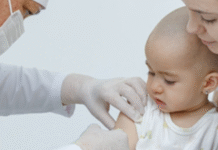New Delhi– In a breakthrough that could significantly expand treatment options for hearing loss, researchers at the Laboratory for Soft Bioelectronic Interfaces (LSBI) at EPFL in Switzerland have developed a flexible, thin-film auditory brainstem implant (ABI) that conforms precisely to the curved surface of the brainstem.
Published in Nature Biomedical Engineering, the study describes how the new implant—made from micrometer-scale platinum electrodes embedded in soft silicone—forms a pliable array just a fraction of a millimeter thick. This design allows for more effective contact with brain tissue, reducing the risk of off-target nerve stimulation and minimizing side effects.
For individuals whose cochlear nerves are too damaged for standard cochlear implants, ABIs offer a critical alternative. While cochlear implants have been a successful neurotechnology for many, ABIs are the next frontier for those whose hearing loss cannot be addressed through traditional means.
“Designing a soft implant that truly conforms to the brainstem environment is a critical milestone in restoring hearing for patients who can’t use cochlear implants,” said Professor Stéphanie P. Lacour, head of the LSBI at EPFL. “Our success in macaque models shows real promise for translating this technology to clinical use and delivering richer, more precise hearing experiences.”
To validate the implant’s effectiveness, the team conducted behavioral tests on macaques with normal hearing, rather than relying solely on surgical assessments. These tests helped researchers determine how well the animals could differentiate between various patterns of electrical stimulation, closely mimicking natural acoustic hearing.
“Our main idea was to leverage soft, bioelectronic interfaces to improve the match between electrodes and brain tissue,” said Dr. Alix Trouillet, former postdoctoral researcher at EPFL and co-first author of the study. “If the array naturally follows the brainstem’s curved anatomy, we can reduce stimulation thresholds and increase the number of active electrodes, enabling high-resolution hearing.”
The implant’s flexible microfabrication also means it can be adapted to suit different anatomical variations, potentially widening its future applications.
While the findings are promising, the researchers emphasized that further studies and regulatory approvals will be required before the soft ABI can become commercially available.
This innovation opens a new chapter in neuroprosthetics and offers hope for patients who previously had limited options for hearing restoration. (Source: IANS)













